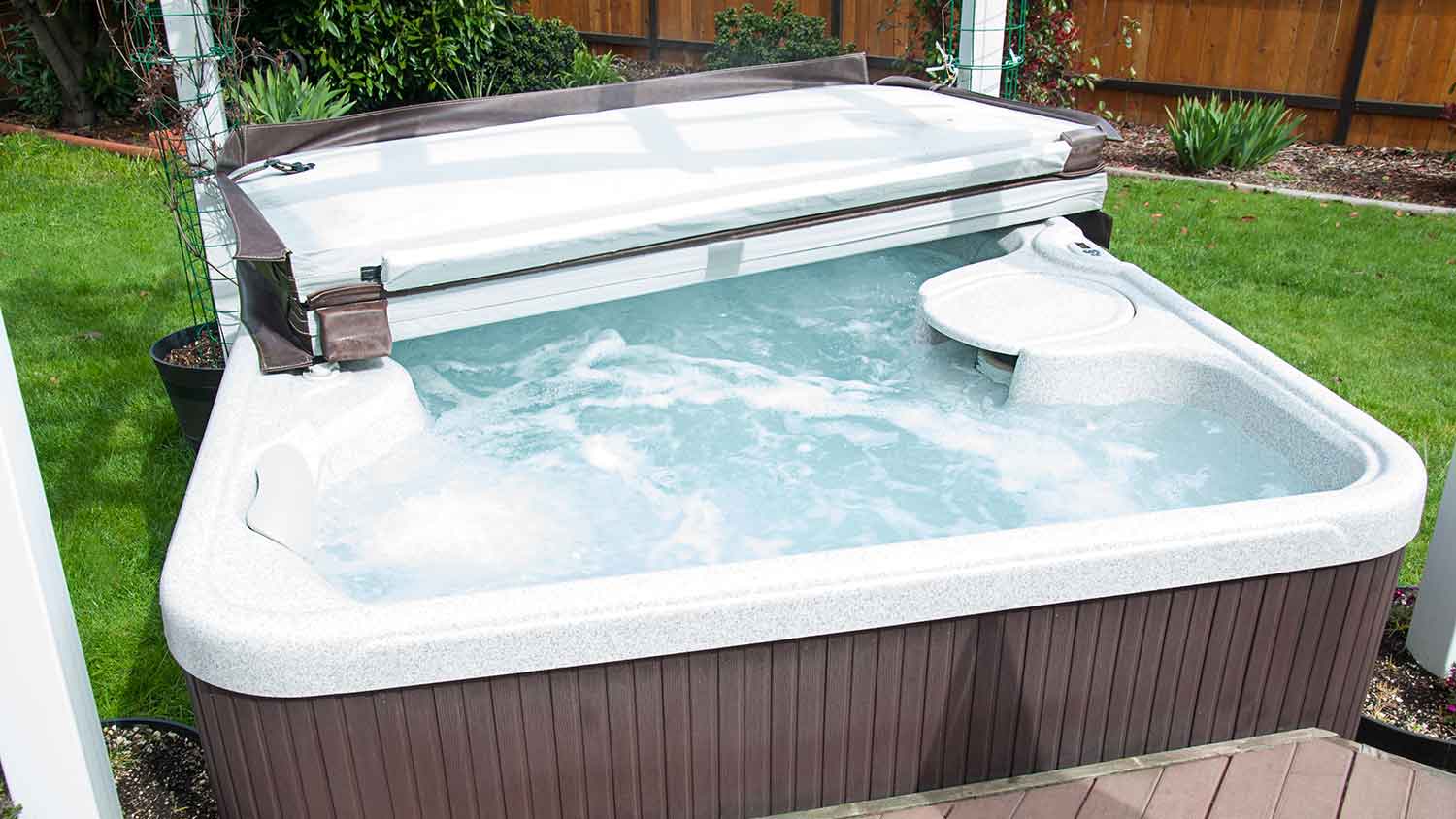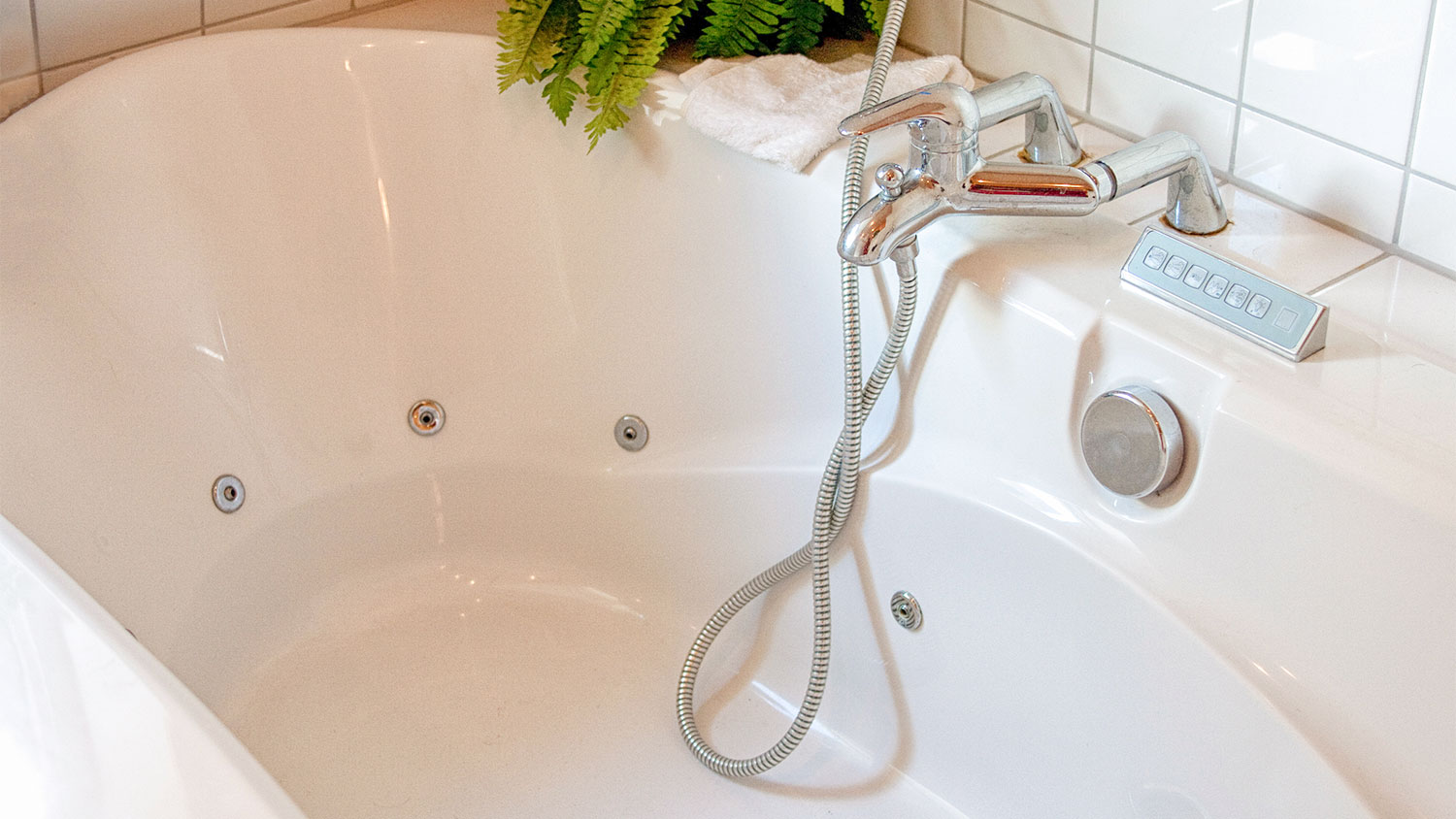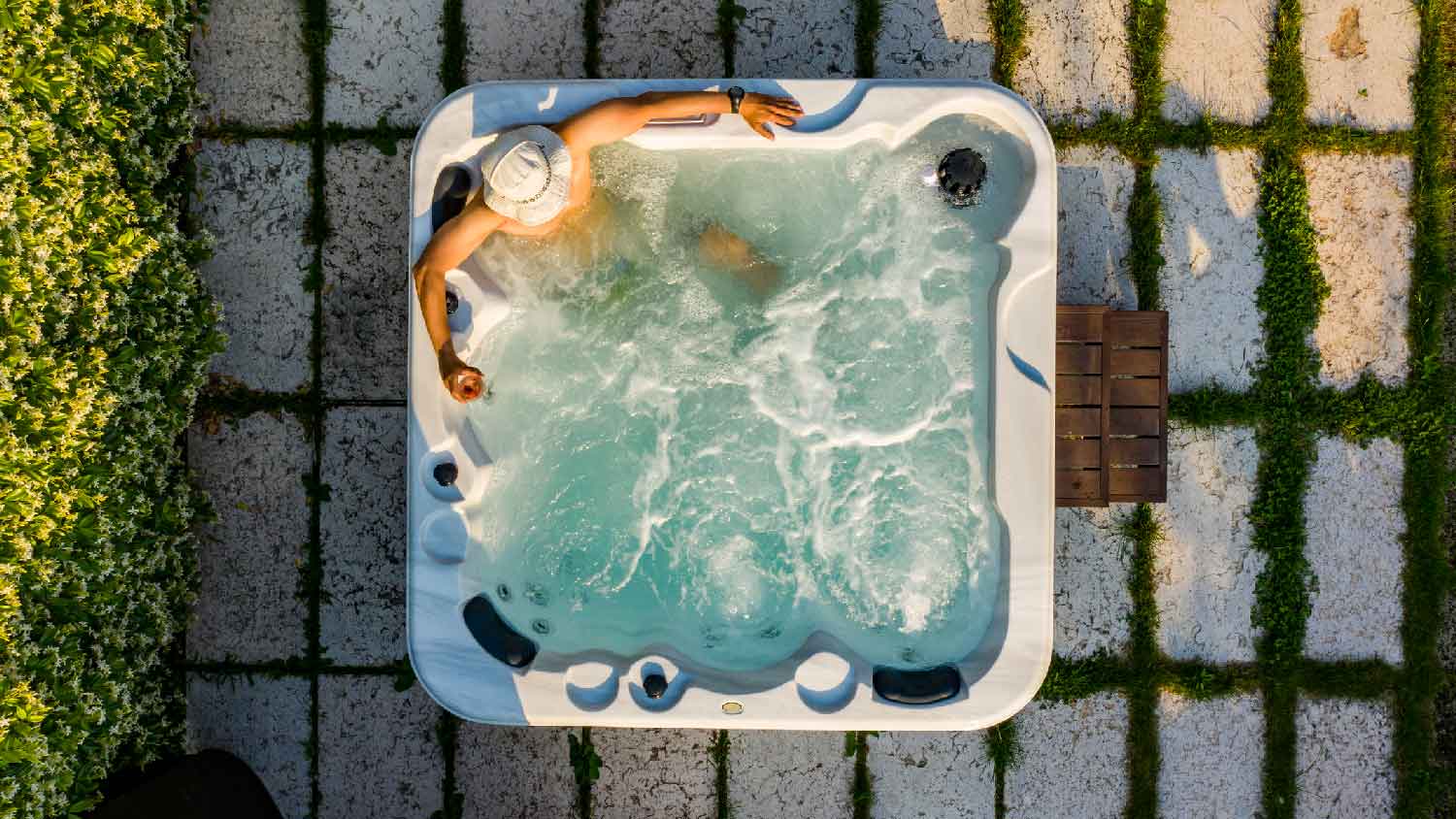
Wondering about hot tub cover costs? Learn what impacts pricing, compare materials, and discover ways to save on your next hot tub cover purchase.
Pool and spa servicing costs depend on your project and location. Check with a local pro for your specific job.
Pool vacuum costs vary depending on the type, size, and brand of the vacuum.
Robotic models are the most expensive, costing up to $1,500, but require less manual effort.
Long-term costs, such as maintenance and repairs, will impact your overall expenditure.
Professional pool vacuum installation is best to ensure optimal performance and avoid costly future issues.
A pool vacuum helps maintain water quality and reduces the need for manual cleaning.
This article was created using automation technology and thoroughly fact-checked and edited by an Angi Editor in accordance with our AI policy.
The average cost for a pool vacuum ranges from $100 to $1,500, with most homeowners paying $700. Prices depend on the type of vacuum, pool size, and whether you hire a pro for installation. Understanding these costs helps you choose the right vacuum for your pool and budget.
Let’s break down what you can expect to pay and the factors that matter most, so you can keep your pool sparkling clean without overspending.
The total cost of a pool vacuum depends on several key factors, including the type of vacuum, the size of your pool, and the brand you select. Each of these elements can significantly impact your final price.
There are four main types of pool vacuums: manual, suction-side, pressure-side, and robotic. Each comes with its own price range and features that influence how much a pool vacuum costs. Manual vacuums are the most affordable but require more effort. Suction-side and pressure-side vacuums automate cleaning somewhat, while robotic models offer the highest level of automation and convenience, at a higher cost.
Advanced features like programmable schedules, energy efficiency, or smart navigation can increase the price. Your pool type—whether above-ground or in-ground—also affects which vacuum is suitable.
| Type | Description | Average Cost |
|---|---|---|
| Manual | Hand-operated, basic cleaning, no power required | $100–$300 |
| Suction-side | Connects to the pool’s filtration, moderate automation | $150–$500 |
| Pressure-side | Uses pool’s return water, requires a booster pump for some models | $300–$900 |
| Robotic | Fully automated, separate from the pool’s system, programmable | $500–$1,500 |
The size of your pool directly impacts the cost of a pool vacuum. Larger pools need vacuums with greater power, bigger debris bags, or longer hoses, which can drive up the price. Vacuums designed for small pools tend to be less expensive, while those built to cover medium or large pools—especially in-ground types—are more robust and costlier.
| Pool Size | Description | Average Vacuum Cost |
|---|---|---|
| Small | Up to 10,000 gallons | $100–$400 |
| Medium | 10,000–20,000 gallons | $300–$900 |
| Large | Over 20,000 gallons | $700–$1,500 |
The construction and materials of a pool vacuum play a key role in both price and durability. Basic models often use plastic components, which keep costs low but may wear out faster. Premium models may incorporate stainless steel, reinforced rubber, or heavy-duty plastics, offering a longer lifespan and better resistance to pool chemicals.
Material compatibility with your pool surface is also important. For example, hard brushes may not suit vinyl liners, while heavy-duty materials are better for concrete or fiberglass pools. Choosing the right materials helps avoid unnecessary repair or replacement costs in the long run.
Brand choice can have a noticeable effect on how much a pool vacuum costs. Well-known brands often charge more due to their reputation, advanced technology, and stronger warranty support. Budget brands offer lower prices but might have fewer features or a shorter lifespan. Mid-range brands balance cost and quality, while premium brands focus on cutting-edge features and durability.
Selecting a reliable brand can mean better long-term value, fewer repairs, and easier access to replacement parts. However, it’s wise to compare warranties, customer support, and available features to ensure you’re making a smart investment, not just paying for a name.
After selecting a pool vacuum, installation costs can add to your total. Some vacuums require professional setup, while others are DIY-friendly.
For more complex pool vacuums—especially robotic or integrated systems—professional installation is often recommended. Professionals such as pool service technicians or experienced handypersons can ensure correct setup and integration with your pool’s systems.
Labor costs for local pool professionals begin with a minimum service fee and may include hourly rates ranging from $50 to $150 per hour, depending on your region and the complexity of the installation. Factors like custom pool system integration, unique pool shapes, or additional accessories can increase labor costs. In busy markets or during peak pool season, you may pay a premium for timely service.
Delivery fees are another consideration when determining the cost of a pool vacuum. If you buy online or from a distant retailer, expect delivery charges based on product size, weight, and location. Delivery fees can range from $0 (with free shipping promotions) up to $100 for large or heavy robotic models.
Some local retailers offer free delivery if your purchase exceeds a certain amount, so check for these promotions before making a decision.
If you’re replacing an old or broken pool vacuum, you may need to arrange for haul-away services. Fees range from $20 to $75, depending on the type of vacuum and local disposal regulations.
Haul-away services include removal, transportation, and proper disposal or recycling, which is especially important for electronic or battery-powered units due to their special environmental considerations.
Many professionals offer additional setup services, such as calibrating the vacuum, integrating it with pool automation systems, or providing a demonstration on how to vacuum your pool. Optional accessories—like extra hoses, adapters, or storage caddies—can be added during installation, with costs that vary from $20 to $200 per add-on.
While some of these extras are nice-to-have, others may be necessary for optimal performance, especially in unique pool setups.
Beyond the purchase and installation, consider these ongoing and potential costs when budgeting for the total cost of a pool vacuum.
Pool vacuums often come with a manufacturer’s warranty, and you can sometimes purchase extended or third-party coverage. Standard warranties last one to three years and cover parts and labor for defects or malfunctions. Extended warranty plans add peace of mind but can cost an additional $50 to $200, depending on coverage length and scope.
A strong warranty can offset the risk of expensive repairs and may influence which vacuum is the best value for your budget.
Robotic and powered pool vacuums use electricity, with an average cleaning session using between 0.2 and 1 kilowatt-hour (kWh). This translates to about $0.03 to $0.15 per cleaning cycle, depending on local energy rates. Battery-powered models may require periodic battery replacement or charging station maintenance, which adds to costs over time.
Some vacuum types also affect water usage, especially if they rely on your pool’s filtration system, but these impacts are minor compared to energy costs.
Routine maintenance is necessary to keep your pool vacuum running efficiently. This includes cleaning filters, replacing brushes or wheels, and checking hoses for leaks or blockages. Replacement parts like filters or debris bags can cost $10 to $50 each, and you’ll likely need new parts annually or semi-annually.
Professional pool maintenance costs $120 to $350 per visit, but regular DIY maintenance can extend the lifespan of your vacuum and reduce long-term expenses.
Over time, your pool vacuum may need repairs such as replacing motors, wheels, hoses, or electronic components. Repair costs range from $50 for minor fixes to $400 or more for major repairs on robotic models. If your vacuum is under warranty, some or all of these costs may be covered.
Most pool vacuums last three to seven years, but repair costs tend to rise as the unit ages. If repair costs approach the price of a new vacuum, replacement often makes more sense.
You have the choice to install your pool vacuum yourself or hire a professional. DIY installation can save on labor costs, with expenses limited to basic tools and your own time, one to three hours for most models. However, certain tools or adapters may be needed, adding $10 to $50 to your total.
DIY installation requires attention to safety and correct setup. Improper installation can void warranties or shorten the vacuum’s lifespan. For complex or integrated systems, we recommend hiring a professional to avoid costly mistakes and ensure proper operation.
Professional installation offers peace of mind and can be completed in less time, often under two hours for experienced technicians. While the upfront cost is higher, you gain confidence that your investment is protected.
Deciding whether to repair or replace your pool vacuum depends on several factors. If your vacuum is relatively new, under warranty, or the repair is minor, fixing it can be a cost-effective choice. However, if the vacuum is out of warranty, older, or the repair cost exceeds 50% of the price of a new unit, replacement is a better investment.
For example, if you’re facing a $400 repair on a vacuum that would cost $600 new, replacing it will likely offer better performance, efficiency, and warranty coverage. Upgrading to a newer model can also lower energy use and maintenance needs, helping you save over time.
Environmental considerations matter, too. Recycling old electronics or choosing energy-efficient models can reduce your pool’s impact on the environment.
Consider the following tips to keep your pol vacuum costs within budget:
Shop during seasonal sales or promotions.
Compare prices across multiple retailers and online platforms.
Consider refurbished or gently used models from reputable sources.
Bundle purchase with other pool equipment for discounts.
Maintain your vacuum regularly to prolong its lifespan and prevent costly repairs.
Evaluate if a less expensive type meets your pool’s needs.
Home is the most important place on earth, which is why Angi has helped more than 150 million homeowners transform their houses into homes they adore. To help homeowners with their next project, Angi provides readers with the most accurate cost data and upholds strict editorial standards. We extensively research project costs to develop the pricing data you see, so you can make the best decisions for you and your home. We rely on reputable sources, including the U.S. Bureau of Labor Statistics, academic journals, market studies, and interviews with industry experts—all to ensure our prices reflect real-world projects.
Want to help us improve our cost data? Send us a recent project quote to [email protected]. Quotes and personal information will not be shared publicly.
From average costs to expert advice, get all the answers you need to get your job done.

Wondering about hot tub cover costs? Learn what impacts pricing, compare materials, and discover ways to save on your next hot tub cover purchase.

Discover the average hot tub maintenance cost, what impacts pricing, and how to save money. Get expert tips to keep your hot tub running smoothly all year.

Hot tub repair costs will depend on the type and severity of the issue. Our cost guide will help you decide whether to DIY or hire a professional.

Discover the cost of whirlpool tub installation, including average prices, key cost factors, and tips to help homeowners budget for their project.

Does your hot tub have you seeing green? Get the answer to "why is my hot tub green" and find out how to get the water back to normal.

A warm soak can renew your spirits, but your hot tub occasionally needs a refresh. This guide will help you decide whether to replace or refurbish your hot tub.